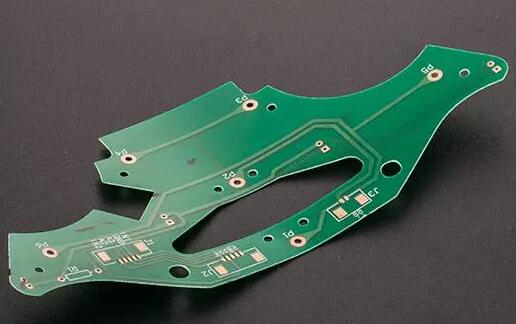There is no absolute standard for thin plates. In the circuit board industry, if the thickness of the board is below 0.6mm, it can be called a thin plate. As the thickness of the PCB decreases, the difficulty of sheet metal processing also increases.

The normal thickness of the PCB board is between 1.0 mm and 2.0 mm. Ultra-thin PCB refer to printed circuit boards that are thinner than regular PCBs. Generally, PCBs smaller than or equal to 0.6mm are referred to as thin PCBs, while PCBs with a thickness of 0.1mm-0.4mm can be referred to as ultra-thin PCBs.
Sometimes, due to space or margin limitations, or for design purposes, people need thinner thicknesses (such as 0.25mm, 0.20mm, or even 0.1mm) to make PCBs usable for SIM and sensor cards. Therefore, very thin or ultra-thin PCBs have emerged. With the demand for thinner devices in the market, people are trying to make designs more portable, lightweight, and flexible, thus the application of ultra-thin PCBs is becoming increasingly widespread.
For FR-4 ultra-thin PCBs, we can make them 0.15 mm, 0.20 mm, 0.25 mm and 0.3 mm, with or without solder mask, with copper thicknesses of 1/2 oz, 1 oz, 2 oz and 3 oz.
Thin PCBs with various thicknesses, such as 0.075mm, 0.1mm, 0.127mm, 0.152mm, 0.18mm, 0.2mm, 0.22mm to 0.6mm, come in many different materials. It depends on what materials you need. We can use flexible core materials and FR4 core materials. There is also BT core material. Or other PCB materials.
FR4 thin PCB and flexible PCB
Ultra-thin FR4 PCBs can be as thin as flexible PCBs and can be bent like flexible circuits, but they are stronger and cheaper than the same copper tracks on each board. Of course, flexible materials and BT materials can also be made into very thin PCBs. If the thickness of the circuit board you need is less than 0.1mm, flexible circuits should be used. For 1L FPC, its thickness can be 0.6 millimeters; For 2L FPC, the thickness can be 0.10 millimeters.
Finished surface
Choosing a very thin PCB thickness may limit the selection of available surface treatments. Each surface treatment has different manufacturing processes based on material characteristics and production methods. Our standard gold-plated surface treatment does support PCBs with a minimum thickness of 0.1 millimeters.
Production equipment
The production of ultra-thin PCBs means the need for specialized equipment, such as specialized cutting machines, production sheet racks, horizontal conveyors, etc., all require specialized fixtures.
Application of Ultrathin PCB
fr-4 ultra-thin PCB is made into thermosetting or thermoplastic plastics and used as laminating resins, insulation coatings, plastics, thin films, and high-temperature structural adhesives. They are widely used in electronics, automobiles, and aerospace, replacing metals (even steel) and glass in many industrial applications. They can also perform well under harsh conditions such as high temperatures. Polymer materials are increasingly being used to improve living standards, including insulation materials in textiles, household appliances, construction and industry, optoelectronic materials, medical implants, the formation of nanoscale films, and so on.
What are the main types of FR-4 ultra-thin PCBs?
The following are the most common ultra-thin types in the current market.
1. Pure Polyamide
Sometimes referred to as second-generation ultra-thin, pure ultra-thin does not contain brominated flame retardants or other additives. This makes them very stable and, from a thermal perspective, more resistant to temperature changes than most other ultra-thin materials. Although not the latest version, pure ultra-thin still has many uses due to its overall strength.
2. Third-generation ultra-thin
The third-generation ultra-thin is newer than pure ultra-thin and contains additives to improve its flammability, which is a key inhibitor for preventing electrical fires. They are not as thermally stable as pure ultrathin, but they also have faster production times, making them an ideal choice for mass-production products.
3. Ultra-thin filling
Ultra-thin filling contains one or more filling materials, which help resist resin shrinkage. Some types of ultra-thin materials are prone to cracking during solidification or drilling, thus maximizing the long-term stability of the product.
4. Low-flow polyimide
Low-flow ultra-thin does not have as much flexibility, which is ideal for printed circuit boards that need to maintain hardness and toughness in harsh environments. When traditional materials are insufficient, low-flow ultra-thin materials are mainly used as special materials for PCB solutions.
Traditional PCB boards usually have a thickness of 2mm or 3mm, but using FR-4 ultra-thin PCB can reduce processing costs and improve quality, as well as significantly reduce production costs.